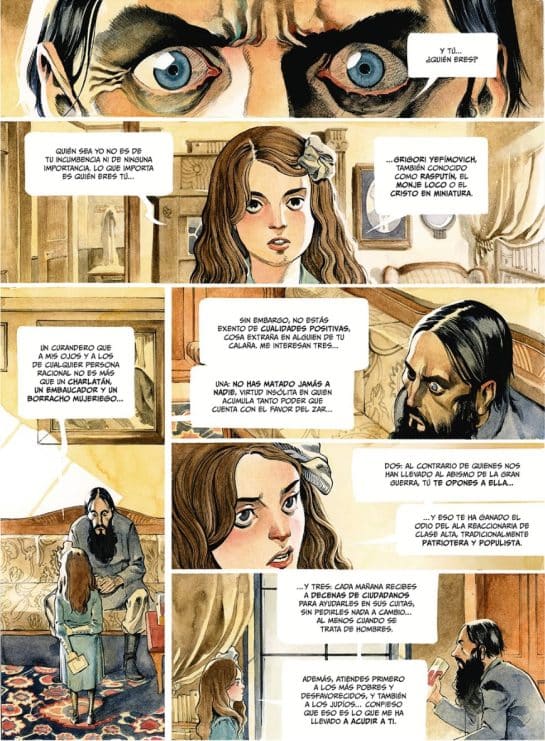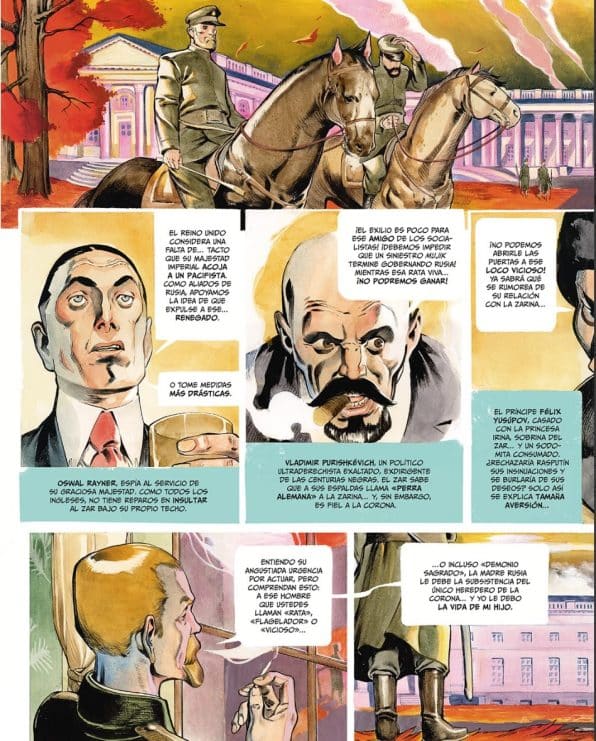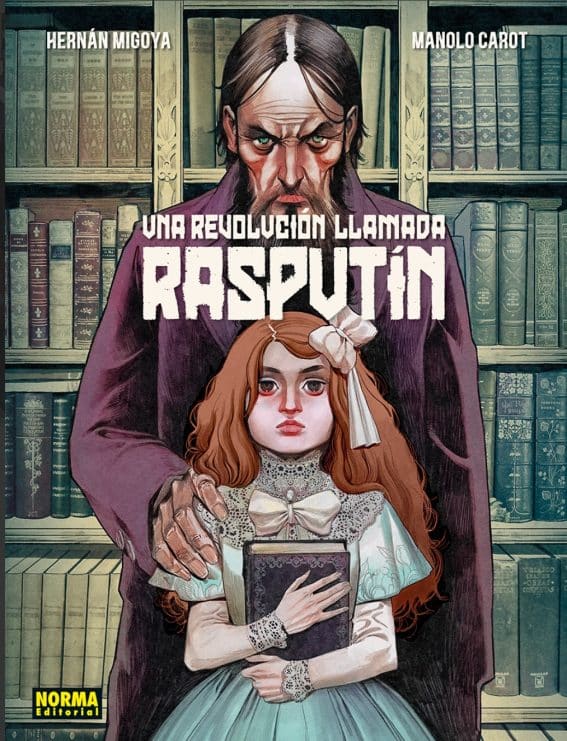
A Revolution Called Rasputin is a graphic novel published by Norma Editorial in which Hernán Migoya and Manolo Carot bring the reader closer to a character as mysterious as he is charismatic in the last days of the tsarist reign.
Editorial standard published this graphic novel scripted by Hernan Migoya and designed by Manolo Carrotwhere they bring to the general public a historical figure both reviled and admiredbased on the visit to the museum by current schoolchildren who do not know the history of their country.
The historical era in which Rasputin lived was very turbulentsince it coincided with the end of the great empires and the old order, what historians call the long nineteenth century, where the Tsar began to be questioned on all fronts, even more so when he intervened in the First World War, which caused a great famine and dissatisfaction among his subjects.
The Russian revolution of 1917 had been awaited since 1870 because tsarist Russia had fallen into crisis and the transition to an ancient and incompetent regime was sought to take care of its population.
Grigory Efimovich Rasputinwas born in the city of Pokrovskoye, in 1869, died in the imperial capital, St. Petersburg, in 1916. He was a Russian mystic with great influence in the last days of the Roman dynastysince he was summoned in 1905 to heal the crown princewho suffered haemophiliahe improved and remained close to the Tsarina’s entourage.
The plot of A Revolution Called Rasputin
The graphic novel begins in the 21st century with some students visiting the museum of St. Petersburgwhere the curator explains the history of the last years of Rasputina well-known mystic who was compared to Jesus Christ and was known as the crazy monkvery respected by the poor who he helped without charging for his intercession, but, at the same time, he was an inveterate womanizer.
At the dawn of the Bolshevik Revolution and with Russia mired in the Great War, the court was a hotbed of trouble, with a great separation between the rulers and the people, who suffered from famine and boredom caused by the war. Here Rasputin continued to pull the strings that his power gave him, but among part of the nobility he had sown so much hatred that there was a plot to assassinate him.
The pages depict a little girl, Alicewho will become a martyr and ally of Rasputin, Alisa –Alisa Zinovievna Rosenbaum-, which will then continue its journey outside the Russian borders and will be the prestigious one Alice O’Connorbetter known as To Rand who wrote the famous novels Spring Yes Atlas shruggedin addition to developing a philosophical system, the objectivism.
Rasputin’s complex relationship with the Tsar’s court, his staunch hatred of foreigners, Bolsheviks and ultranationalists, will not prevent him from continuing to offer his blessing to anyone who asks, but just as Caesar was warned of the Ides, Rasputin he will not stop doing what he wants despite the warnings of fate, embodied in his daughter and Alisa.

The artists
The ponferradino Hernan Migoya He is well known in the world of the ninth art, with more than thirty years as a screenwriter and writer under his belt. As a detail of his countless works, we can mention Nuevas Agañas Bélicas, set in the Spanish Civil War, as well as. the adaptation of the novels by Norma Editore Pepe Carvalho written by Manuel Vázquez Montalbán: Tattoo, The Solitude of the Manager or The South Seas.

With the excellent background that precedes him, Hernán Migoya weaves a history who, despite knowing the outcome of the mad monk, it immerses the reader in it absolutelyTherefore the story is fluid and without jarringwhich doesn’t diminish his interest in the slightest, especially when he interacts with Alisa or his undeclared enemies, shaping a very solid Rasputin.
The fact of having centered the action on the last times of the mystic means that the author focuses not only on the protagonist, but also weaves a dense network of secondary characters that enriches the plotbecause Rasputin’s point of view is very interesting, as is that of those who try to eliminate him from the board. The use of different planes provides an element of vividness that the reader can appreciate.
Furthermore, Manolo Carrot -also known as Man, with almost three decades in the ninth art- in the graphic trait, he knows how to perfectly convey the idea proposed by the protagonist, creating a intense line that invigorates Rasputin’s expressions and makes Alisa even more innocent. On the other hand, the management of shadows emphasizes the dark tone of the panels and the color applied intensifies the action.
Him detail of the artist with the elements surrounding Rasputin is worthy of praise, since he knows how to transfer the action into its historical moment and does not hesitate to draw elements from it that, at first glance, may go unnoticed, but give value to the historical moment that the character is experiencing.
The edition
Editorial standard he published A revolution called Rasputin From Hernan Migoya Yes Manolo Carrot In axiswith a size of 23.5 x 31.2 and an extension of 88 pages A color; all accompanied as an extra by a graphic dossier by Carot, as well as a short page with the Russian terms used in the graphic novel.

A SHOCKING PORTRAIT OF THE LAST DAYS OF TSARIST RUSSIA
Saint, mystic, womanizer, scourge of the aristocracy, defender of Jews and sexual minorities, friend of the people, Grigori Yefímovich Rasputin gathers around him as much support as hatred.
While the Russian nobility, the political far right and foreign secret services conspire to make an attempt on his life, he will have the unexpected help of an exceptional girl who will fight to save him: little Alisa, later known as Ayn Rand.
Screenwriter Hernán Migoya and cartoonist Manolo Carot join forces to create an explosive encounter, that of the “mad monk” with the future queen of extreme individualism.